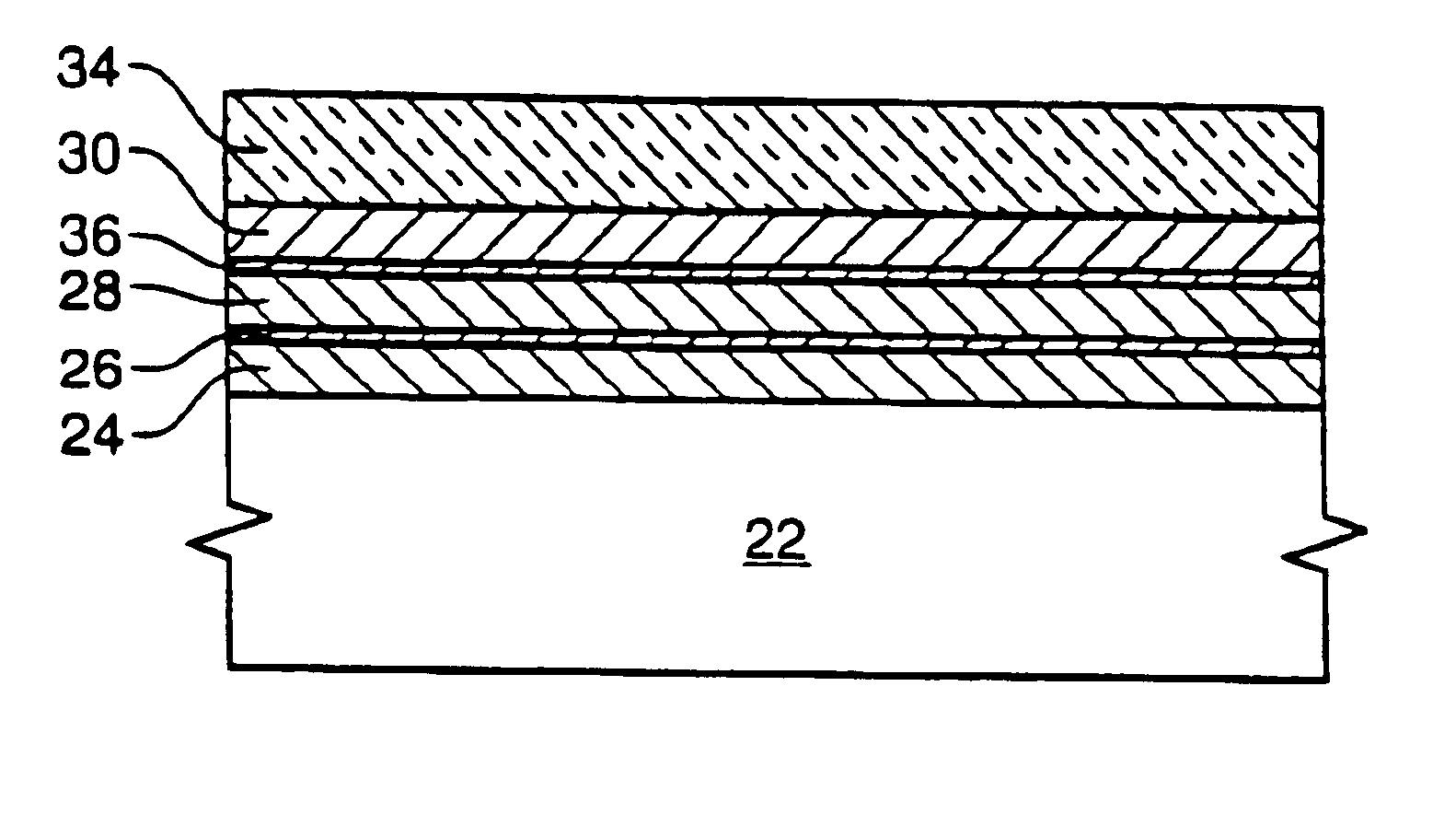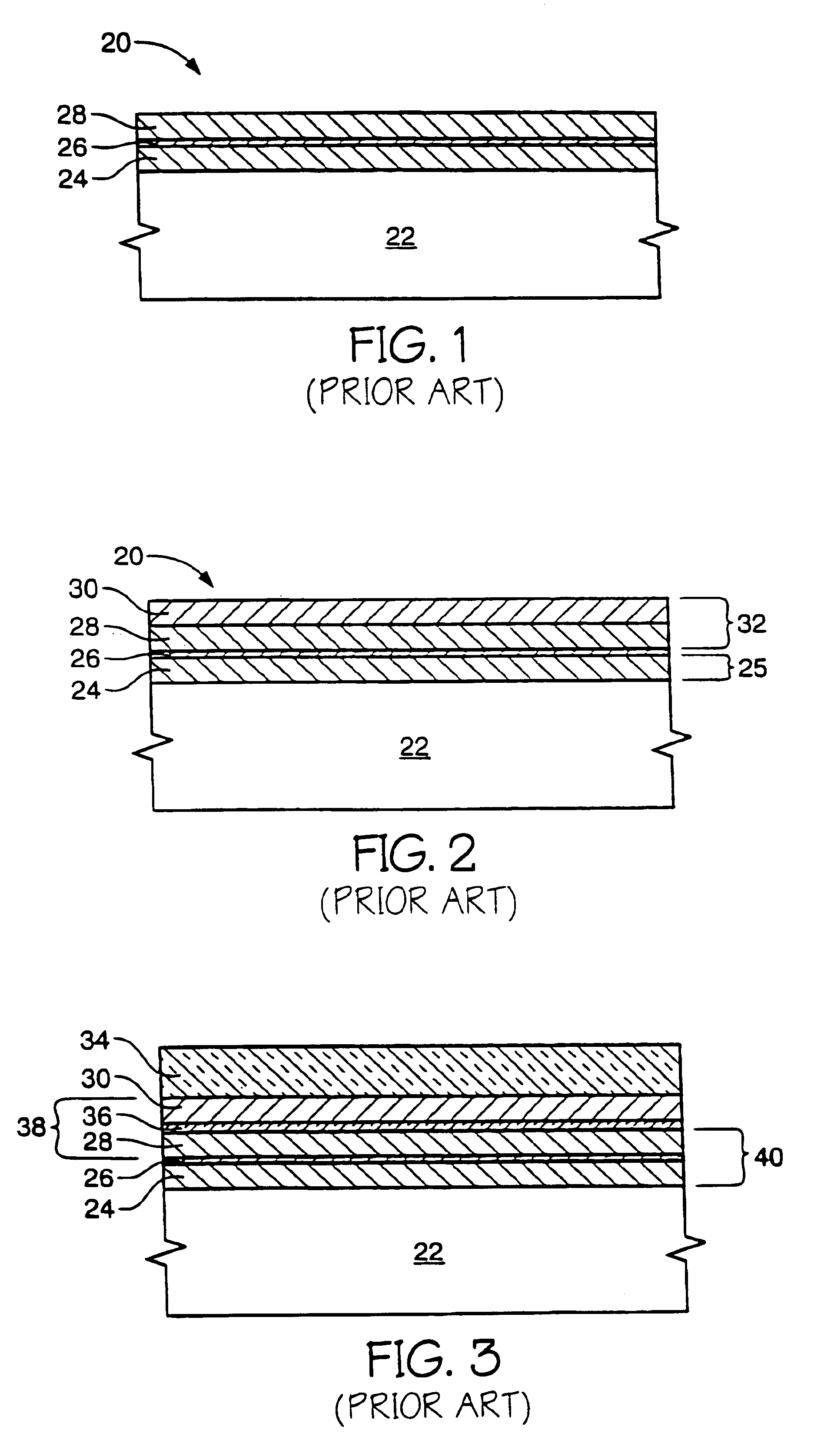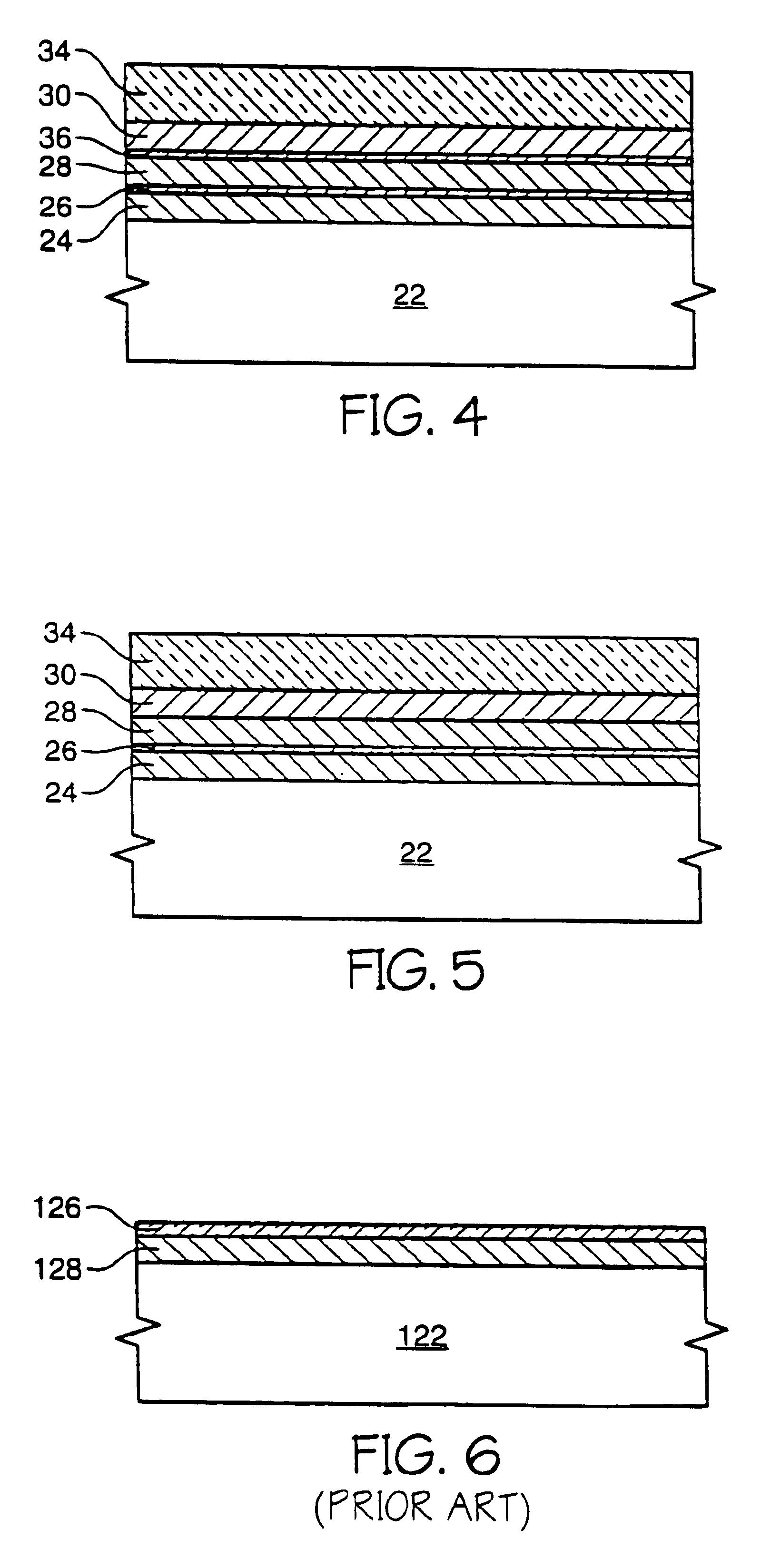Device and method for protecting against oxidation of a conductive layer in said device
- Summary
- Abstract
- Description
- Claims
- Application Information
AI Technical Summary
Benefits of technology
Problems solved by technology
Method used
Image
Examples
Embodiment Construction
FIG. 1 depicts an “in-process” device 20—one that is in the process of being constructed—having undergone processes known in the art. First, a substrate 22 has been provided. In the current application, the term “substrate” or “semiconductor substrate” will be understood to mean any construction comprising semiconductor material, including but not limited to bulk semiconductive materials such as a semiconductor wafer (either alone or in assemblies comprising other materials thereon), and semiconductive material layers (either alone or in assemblies comprising other materials). Further, the term “substrate” also refers to any supporting structure including, but not limited to, the semiconductive substrates described above. Over the substrate 22, a first conductive layer 24 is provided. It is assumed for purposes of explanation only that the in-process device is a capacitor in the process of being built. Accordingly, the first conductive layer 24 serves as one of the capacitor's condu...
PUM
 Login to View More
Login to View More Abstract
Description
Claims
Application Information
 Login to View More
Login to View More - R&D
- Intellectual Property
- Life Sciences
- Materials
- Tech Scout
- Unparalleled Data Quality
- Higher Quality Content
- 60% Fewer Hallucinations
Browse by: Latest US Patents, China's latest patents, Technical Efficacy Thesaurus, Application Domain, Technology Topic, Popular Technical Reports.
© 2025 PatSnap. All rights reserved.Legal|Privacy policy|Modern Slavery Act Transparency Statement|Sitemap|About US| Contact US: help@patsnap.com



